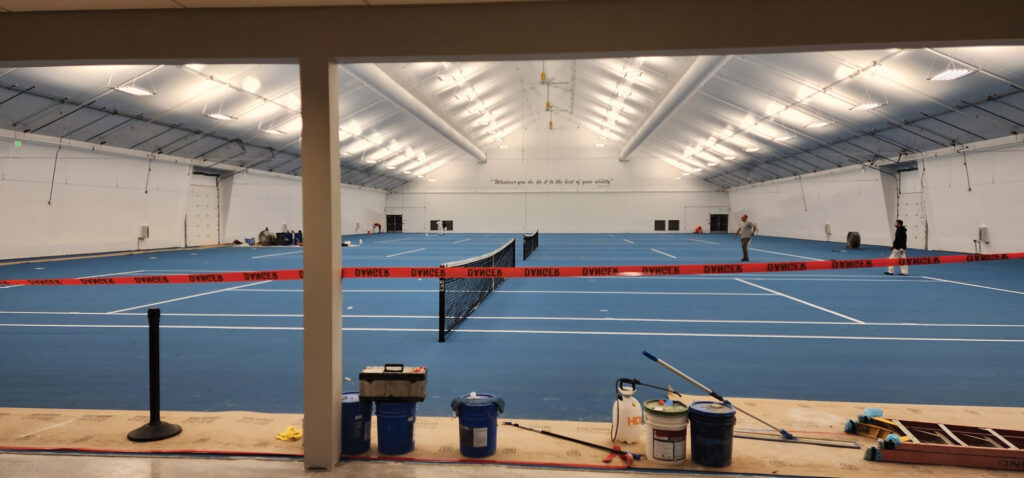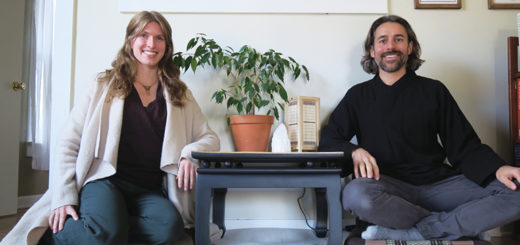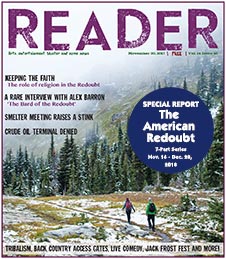With $101K revenue shortfall, city looks at options for James E. Russell Sports Center
By Zach Hagadone
Reader Staff
About six months after opening the doors to the James E. Russell Sports Center, city officials reported May 28 that the facility is running at a deficit of about $101,000 — generating an estimated $72,000, mostly from membership fees.
“[I]n the municipal recreation industry, we talk about the cost recovery ratio, so that puts us at about 54%,” Sandpoint Planning and Community Development Director Jason Welker said at a City Council workshop hosted in the JER community room.
The sports center incurred about $138,000 in expenses since opening in mid-December 2024, though Welker said many of them were related to one-time startup costs. However, staffing at JER ran to about $95,000 during the period, though that’s expected to go down with the restructuring of the Parks Division — reducing full-time equivalent staff at JER from 130% to about 70% FTE.
Membership has lagged behind expectations at JER, with 51 members paying $400-$450 per year to access the tennis and pickleball courts, and a further 50 members who pay $40-$45 per month.

The interior of the James E. Russell Sports Center before it opened to the public in December 2024. Courtesy photo.
“So as of last week, we had 101 paying members in the month of May, but all-time we have had 238 paying members. So if you’re wondering, ‘Why aren’t we covering more of our costs?’ there’s a big reason,” Welker said. “Member retention is very low. We’ve had only about 35% or 40% of our members renew their membership. …
“That is obviously a statement about how we are operating the facility,” he added. “We aren’t offering an experience that has made people want to pay that $40 to $45 a month. That’s something we are very aware of.”
Built with a $7.5 million donation from the family of the late-James E. Russell, Sandpoint Mayor Jeremy Grimm called it “an amazing gift,” but “a gift that’s now becoming a cost,” which is “obviously a concern.”
Welker walked the council and attendees at the public workshop through a range of options for how to operate JER in the future, with hopes of increasing revenue, reducing costs or some combination of the two.
The four options presented included maintaining the status quo, or “staying the course”; adapting the facility to serve multiple sports beyond tennis and pickleball; bringing in a third-party operator, such as the U.S. Tennis Association-Pacific Northwest; or minimizing operations.
The status quo option would mean maintaining the current in-house operations under newly hired facility supervisor Ryan Wells, who would be tasked with growing the primary user groups while prioritizing programming with local pros and instructors, hosting regional leagues and tournaments, and increasing daily play alongside private court and community room rentals.
Moving to a multi-sport model would include installing a “semi-permanent” basketball and volleyball court over one of the tennis courts and “modular temporary” turf field that could be installed over another tennis court.
“This would maintain three tennis courts and 10 pickleball courts for the primary user groups and enable access for hundreds of local youth and the broader sporting community,” Welker said.
He estimated the multi-sport court would cost about $54,000, and between $77,000 and $80,000 if the design included six basketball hoops on one full court and two half courts.
Adapting the space with a portable volleyball system would cost about $12,000, though the portable field turf could run to $130,000. Two batting cages would cost about $8,000, while a 120-foot-by-120-foot gym floor covering for special events on two courts would cost $25,200.
With miscellaneous expenses of about $18,000 added, the multi-sport option could run to about $326,000. However, Welker indicated that an anonymous donor has already offered to match any investment made using city or private dollars, which would bring Sandpoint’s overall cost to $163,000, with funding from either the Parks Capital Improvement Project or Development Impact Fee funds.
“I don’t want to get into details about what that is, but we do have dedicated funds for parks projects like this,” Welker said. “Of course it’s not free; it comes with trade-offs.”
Specifically, he added, “I did not take into account the possible reduction in revenues from pickleball and tennis use as we convert one court on a semi-permanent basis and on a seasonal basis we lose a second tennis court, so we would definitely see revenues from tennis and pickleball decrease.”
Welker said discussions are still preliminary on how a third-party operator agreement might work, but the nonprofit USTA PNW has a track record of running similar facilities in Washington, with a mission of getting adults, kids and families engaged in tennis across Alaska, Idaho, Oregon and Washington.
“[I]t would be a hybrid model where the city maintains the front desk staff. We maintain a lot of the daily kind of foundational operations, but all the programming will get handed off to an outside organization,” Welker said.
Going that route would likely include $89 to $129 a year for a membership and court fees of between $12 and $17 for members. Non-members would pay something like $20 to $27 per court.
“This would not be an option that would necessarily make it cheaper to play,” Welker said.
Finally, the “minimal operations” option would reduce costs by going to one part-time employee working eight to nine hours per day, with opening hours limited to five days a week. Welker said the concern with that option is that while it may reduce costs by up to $75,000, revenues would likely fall by even more.
“To give you an idea, we’re open almost 80 hours a week right now. If we went down to 40 hours a week, that’s half the revenue bringing possibility as well,” Welker said. “So losses will definitely continue even if we went towards a cost minimization strategy.”
Feedback on a recent survey included comments opposed to the multi-sport option, including that it would be “alienating the entire racquet sport community, destroying a world-class facility and creating a mediocre field house for children.”
However, another comment noted that JER “has caused negative outcry from locals since the start. By engaging youth and adult organizations you are showing that JER is intended for all. Not only paddle sport players.”
While Welker said “it is highly unlikely that JER will fully fund its operations out of revenues, regardless of the operating model chosen by council,” he said that its 54% cost recovery ratio is actually on par with sports facilities around the country and even better than many of Sandpoint’s public recreation facilities, which overall have a cost recovery ratio of 42.5% — costing $329,428 citywide and generating $139,850 in revenue.
Council members asked questions, but made no decision at the May 28 workshop, with Councilors Joel Aispuro and Rick Howarth indicating interest in the multi-sport option.
“I was a part of this process from the beginning, and there’s been a lot of difficult feelings and thoughts, and not knowing the future can be very difficult,” Aispuro said. “Off the bat, half of me says Option 2 is a great idea and that’ll benefit a lot of people. The other half of me thinks that it hasn’t even been a year yet.”
Several community members who spoke at the workshop were in favor of maintaining the status quo to give time for membership to increase. Others, including area coaches, favored the multi-sport option to provide broader access to local youth.
More than a few — including Welker — were critical of the lack of marketing for JER.
“We have completely failed in marketing this facility,” Welker said. “There hasn’t been adequate marketing whatsoever.”
“We have to figure out a way to utilize this facility — it costs too much not to,” Haworth added.
View the full workshop at youtube.com/@CityofSandpoint.











 Coming up this week! Don’t miss Live Music, the Summer Sampler, the Art Party, Monarch Grind, the Sandpoint Renaissance Faire, and more! See the full list of events in the
Coming up this week! Don’t miss Live Music, the Summer Sampler, the Art Party, Monarch Grind, the Sandpoint Renaissance Faire, and more! See the full list of events in the 